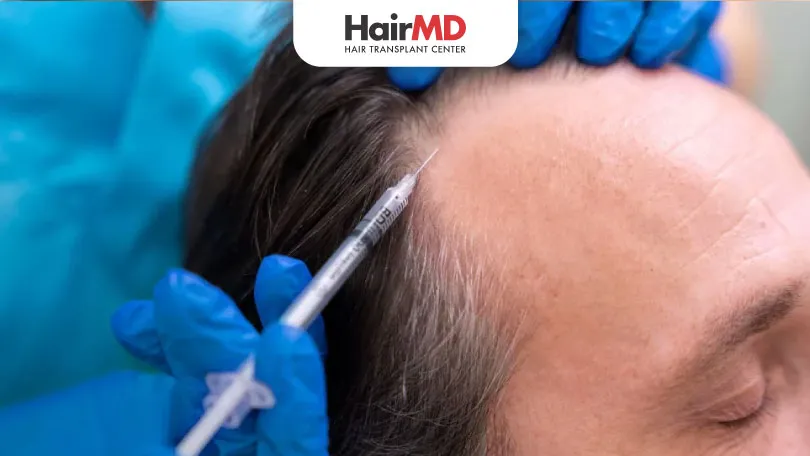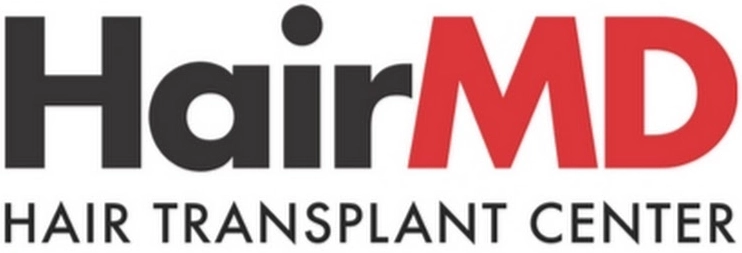13th July , 2024

Hair loss can be a challenging issue, but there are promising treatments available, including Mesotherapy and PRP (Platelet Rich Plasma) therapy.
Both methods aim to stimulate hair growth, though they work in different ways. Mesotherapy injects nutrient-rich boosters into the scalp, while PRP uses your own blood’s growth factors to promote hair health. This blog explores the advantages, processes, and side effects of both treatments, helping you decide which may be more suitable for your hair loss concerns.
What’s covered in the article?
- Best Treatment For Hair Loss: Mesotherapy vs PRP
- PRP (Platelet Rich Plasma) Treatment for hair loss
- How does PRP work?
- PRP didn’t work: Why am I not a suitable candidate for PRP?
- Advantages of PRP
- PRP hair treatment side effects
- Mesotherapy treatment for hair loss
- How does Mesotherapy work
- Mesotherapy Benefits
- Mesotherapy Side effects
- Mesotherapy vs PRP for hair
- Mesotherapy vs PRP for hair: Which is better?
- Conclusion
Best Treatment For Hair Loss: Mesotherapy vs PRP
Nowadays, due to our poor lifestyles, diet, as well as genetics, all of us have started facing hair loss problems early on. There are many treatment modalities that doctors may advise for hair loss. Don’t worry you are in the right place to get the answer to all your queries related to hair loss, treatment modalities, and which treatment is better for your hair loss.
In this guide, we will look at Mesotherapy Vs PRP for hair loss, and which treatment is right for you
PRP (Platelet Rich Plasma) Treatment for hair loss
PRP is a completely natural, non-surgical medical procedure for treating hair loss or hair thinning. The plasma therapy for hair loss works by using the patient’s blood and the active growth factors in it to promote hair growth.
How does PRP work?
- Your blood is taken from the body and centrifuged to concentrate the platelets and growth factor proteins, such as vascular endothelial growth factor, platelet-derived growth factor, epidermal growth factor, etc.
- Then the head is triggered via electronic or mechanical micro-needling, to stimulate the injury-recovery procedure, which is essential for the subsequent use of platelets and growth factors.
- This centrifuged plasma rich in platelets is then re-injected into the head.
- The growth factors released from platelets reduce shrinkage of hair follicles, improve blood flow, and encourage new growth of cells.
- PRP helps to keep the hair follicles in a growth phase (anagen phase) and allows the hair to become thicker and longer. So, it promotes new growth and also strengthens the existing hair follicles.
At least 3 PRP injections, recommended in an interval of 2-4 weeks for visible change in the density and thickness of hair, are noticed. It can also be used for treating hair loss due to other non-genetic and genetic causes. PRP is also effective in Skin rejuvenation & under eye dark circles.
It can be used alone, or in combination with hair transplant or mesotherapy for maximal benefit.
PRP didn’t work: Why am I not a suitable candidate for PRP?
While PRP is used to treat hair loss due to various causes, it is not recommended to individuals suffering from liver disorders, bleeding disorders, chemotherapy, skin disorders, those who have low blood pressure, smokers, and users of cortisone therapy.
Advantages of PRP
- Safe, simple, and comfortable treatment
- Natural therapy
- Non-surgical
- Short duration (1-hour max)
- The quick recovery period, no downtime
- No risk of allergic reaction since it comes from your own body
- Hair restoration
- Cost-effective
- Extremely natural-looking results
PRP hair treatment side effects
Since it involves injecting a substance into the skin, very rarely, there may be potential side effects like infection, nerve injuries, pain at the injection site, and tissue damage.
Mesotherapy treatment for hair loss
Mesotherapy is a non-surgical technique to reduce hair loss and it promotes hair growth by injecting nutrient-rich liquid into the mesoderm of the scalp, which is a layer that lies between the tissue of the skin and the layer of fats.
How does Mesotherapy work
- A mixture of nutrient boosters, comprising vitamins, minerals, and DHT (dihydrotestosterone) blockers injected into the mesoderm to stimulate hair growth and reverse hair loss. (DHT is the androgen hormone that damages hair follicles on the scalp.)
- Then it is injected into your scalp with the help of an injection gun in a painless manner.
- It works because it increases blood circulation to the weakened or dormant hair follicles, boosts cell metabolism, stimulates collagen; replaces the vitamins and minerals that we lose as we age, and neutralizes the DHT (follicle-killing) hormone; thus, curbing hair loss and encouraging hair growth.
- The treatment encompasses about eight sessions, one every two weeks for the duration of half an hour each. Effects start becoming visible by the fifth session and are known to have a success rate of 90-92%.
It is effective for treating androgenetic alopecia, but it also treats hair loss due to other causes such as nutritional deficiencies, chronic illness, weather changes, stress, etc. It can not only be used for treating balding, patchy hair loss, progressive thinning of hair, but also for dandruff. People with dermal inflammation, skin disorders, diabetes, hemophilia, and pregnancy should not do mesotherapy as it may deteriorate their health condition.
Mesotherapy Benefits
- Safe, simple, and comfortable procedure
- Non-surgical
- Short duration (~30 minutes)
- Virtually painless
- No pre or post-precautionary measures required
Mesotherapy Side effects
They are rare, the most common being bruising, which usually heals within a week; and soreness in the scalp region, that may last for a couple of days.
Mesotherapy vs PRP for hair
- PRP requires local anesthesia to reduce pain, Mesotherapy is done directly without anesthesia.
- PRP uses your own growth factors, Mesotherapy uses plant stem cells and other protein serums.
- PRP involves multiple hair growth injections with platelet-rich plasma, while mesotherapy involves those nutrient-rich solution.
- Mesotherapy injects it into the mesoderm (middle layer) of the skin, while PRP is administered on any layer of the skin to be treated.
- Mesotherapy requires about 5-8 sessions, PRP takes about 7-10 for visible results.
- Each session of mesotherapy, as well as PRP, takes about half an hour and one hour respectively.
- PRP and Mesotherapy don’t require much healing or downtime and can be done quickly.
- PRP is more expensive than mesotherapy usually.
Mesotherapy vs PRP for hair: Which is better?
PRP therapy and mesotherapy both have their own set of advantages to offer depending on the condition to be treated. PRP has proven to be highly effective in helping hair follicles remain in the growth phase resulting in thicker and longer hair. Moreover, it also promotes the growth of new hair and strengthens the existing hair follicles.
On the other hand, mesotherapy is used to treat hair loss caused due to genetic reasons, stress, diet, or chronic illness. It aims at improving the absorbance of necessary ingredients and compounds through the scalp for proper hair health and growth. The results from mesotherapy can be maximized by a series of sessions over a course of a few months.
In general, both therapies are effective in the treatment of hair loss and less expensive than hair transplant surgery. They can be merged as well for delivering even better results. While PRP for hair is used right after the hair transplant surgery to initiate the process of faster healing, mesotherapy for hair loss can be used to maintain the results of hair transplantation for a long time.
Over to you
As observed, PRP, as well as Mesotherapy, can be equally effective, and be even more so when used in combination with one another. They both serve as safer, less expensive, and less invasive alternatives to hair transplant surgery.
For queries and concerns regarding hair loss treatments, book your consultation with a HairMD expert.
Do You Know?
Nearly 250 Patients Visit HairMD
Everyday For Various Hair Concerns?
(Your journey to healthier and fuller hair starts here!)
Meet Our Dermatologists
Conclusion
In conclusion, both Mesotherapy and PRP are effective treatments for hair loss, but their suitability depends on individual needs and conditions. Mesotherapy is ideal for nourishing the scalp and improving hair health, while PRP leverages the body’s natural growth factors to stimulate hair regeneration. Consulting with a hair specialist is crucial to determine the best approach based on your specific hair loss pattern, medical history, and desired results. Ultimately, combining these treatments may also be an option for some individuals.
Further Reading
Top Kitchen Ingredients to Boost Hair Growth
Discover the best kitchen ingredients for hair growth! Use coconut oil, onion juice, aloe vera & more to nourish your hair naturally and reduce hair fall.
How to use Minoxidil and Dermaroller together?
Boost hair growth with Minoxidil & Dermaroller! Learn the right technique, benefits, and mistakes to avoid for thicker, healthier hair.
Powerful Home Remedies for Itchy Scalp
Soothe an itchy scalp naturally with home remedies like aloe vera, coconut oil, and apple cider vinegar. Discover simple solutions for scalp relief.
Omega-3 for Hair Growth: Benefits and Side Effects
Omega-3 nourishes hair, promotes growth, and reduces hair fall. Know its benefits, side effects, and best sources for healthy, stronger hair.
Have thoughts? Please let us know
We are committed not only to treating you, but also educating you.











